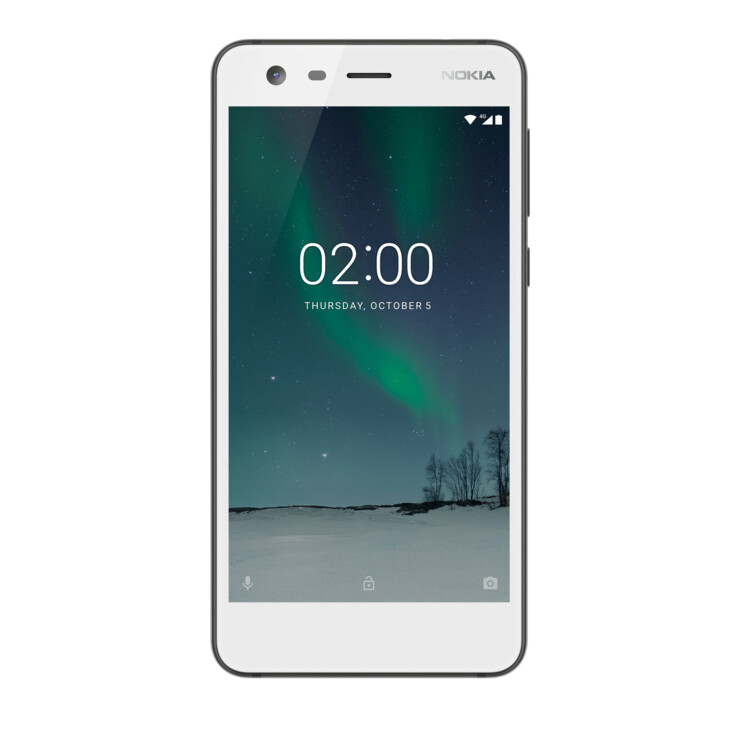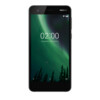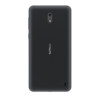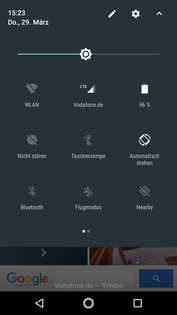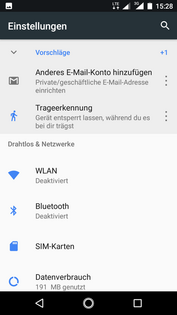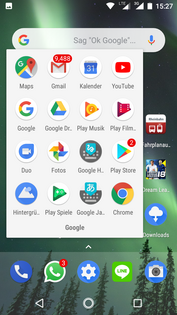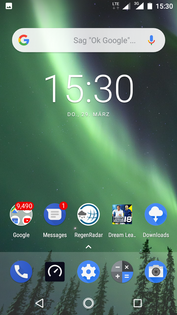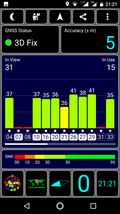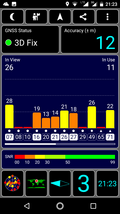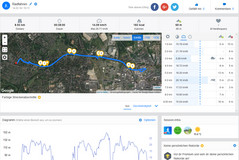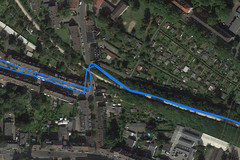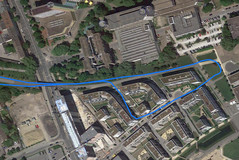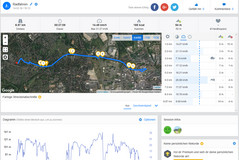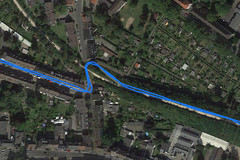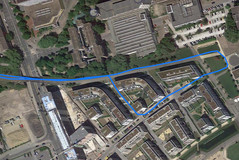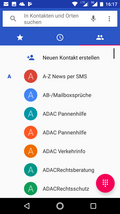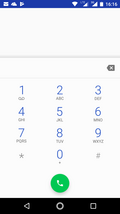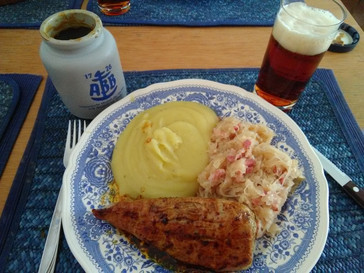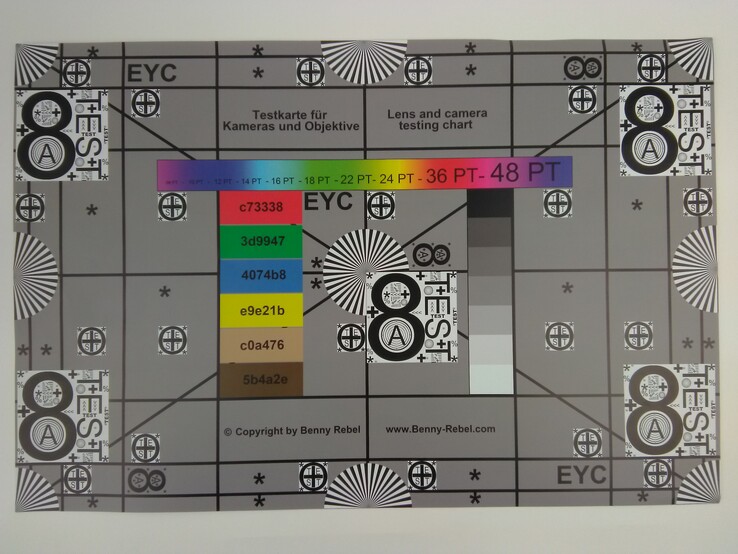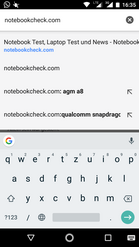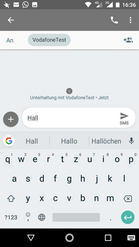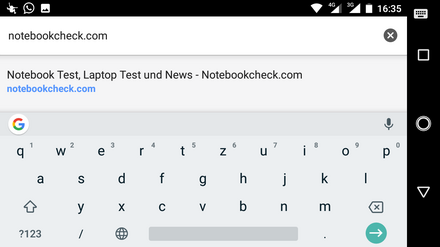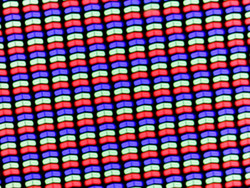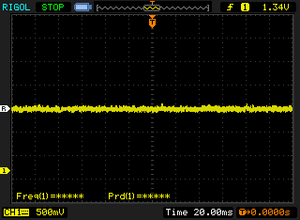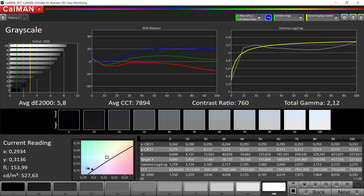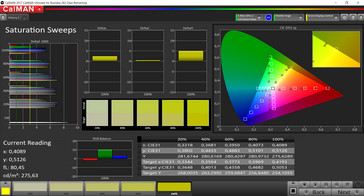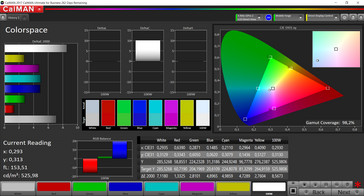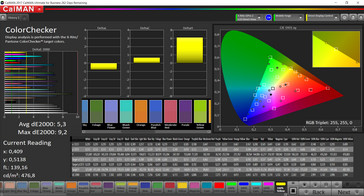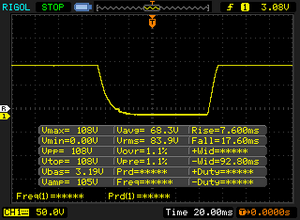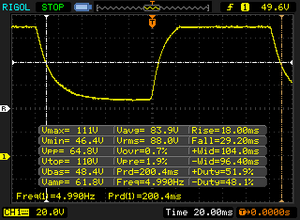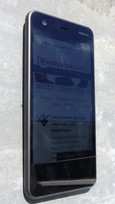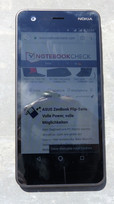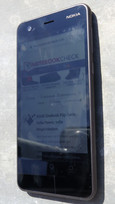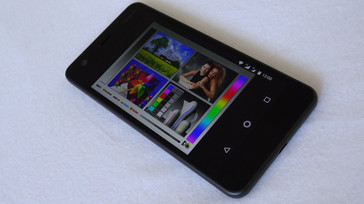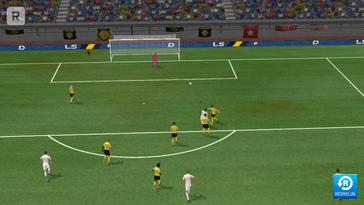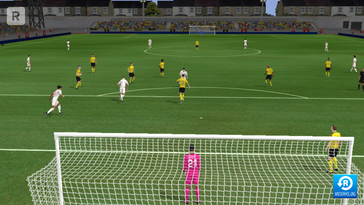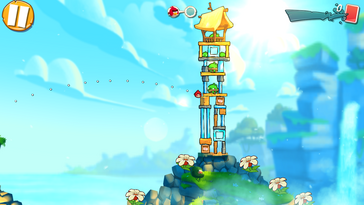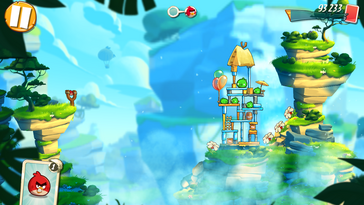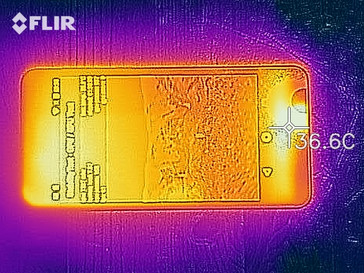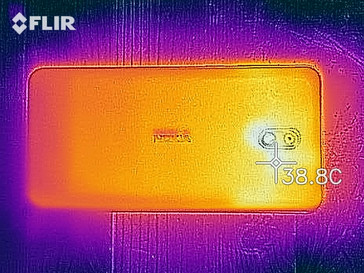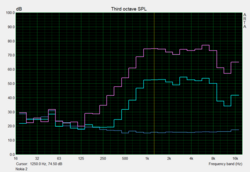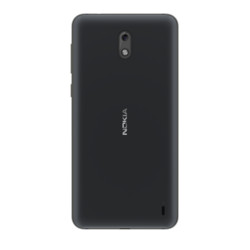Nokia 2 Smartphone Review
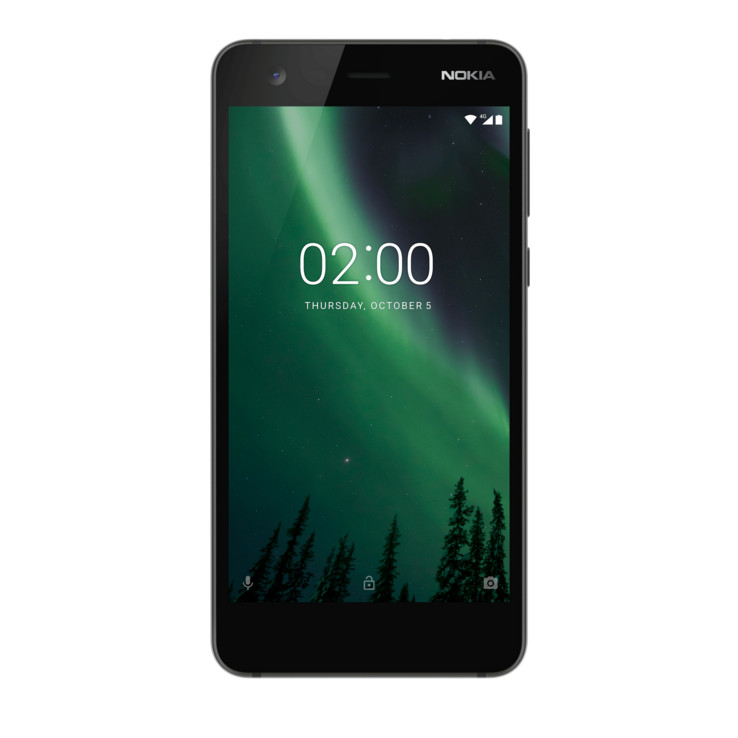
The Nokia 3, Nokia 5, Nokia 6 and Nokia 8 already represent Nokia’s entry-level, mid-range and premium hardware. The Nokia 2 extends their entry-level offerings, competing against devices such as the LG K4, the Motorola Moto E4 and the Samsung Galaxy J3 for market share. The Galaxy J3 is the most expensive of these devices, available online for around €130 (~$160). By contrast, the LG K4 is the cheapest at €90 (~$111). While the Nokia 2 and Moto E4 run Android 7.1.1 Nougat, the Galaxy J3 runs the slightly older Android 7.0, with the LG K4 still stuck on Android 6.0.1 Marshmallow. All smartphones have five-inch HD displays and support Dual-SIM functionality. The Nokia 2 and LG K4 each have 8 GB of storage, half the volume of the Moto E4 and Galaxy J3, both of which come with 16 GB of onboard storage.
The Nokia 2 has a 4,100 mAh battery, which is larger than any of our comparison devices. This large battery is reflected in the device’s dimensions, with the Nokia measuring 143.5 mm (~5.65 in) tall, 71.3 mm (~2.8 in) wide and 9.3 mm (~0.37 in) thick. This makes the Nokia 2 roughly the same size as the Moto E4, with the LG K4 and Galaxy being the smallest and slimmest devices respectively. The Nokia 2 weighs 164 g (~5.8 oz), which makes it heavier than all our comparison devices. There is limited water and dust protection thanks to the Nokia 2 being IP52 rated. There is no fingerprint scanner.
The Nokia 2 is powered by a Qualcomm Snapdragon 212 processor, which has four cores clocked at 1.3 GHz. This is unlike most entry-level devices which are powered by the MediaTek alternatives instead. The Nokia 2 supports up to 128 GB microSD card expansion and two nano-SIMs. In theory, the Nokia 2 can achieve up to 150 Mbit/s download and 50 Mbit/s upload speeds over LTE.
There is an 8 MP front-facing camera with autofocus and High Dynamic Range (HDR), and a fixed focus 5 MP front-facing camera for selfies among other things.
Case
The Nokia 2 is available in either black or white. Even though the Nokia 2 has a removable back, which gives access to the dual nano-SIM and microSD card slots, there is a non-replaceable 4,100 mAh battery. Despite being 9.3 mm (~0.37 in) thickness, the device is still easy to use one-handed.
The degree of dust and water protection that current flagship devices have is yet to reach entry-level hardware. The Nokia 2 is IP52 rated, which only protects against non-damaging levels of dust and complete protection from vertically dripping water with the device titled at 15°.
Connectivity
The Nokia 2 is powered by a Qualcomm Snapdragon 212 processor. This is a quad-core CPU with only a 1.3 GHz clock speed. This is coupled with an Adreno 304, which handles graphics. To get an idea of performance, the Adreno 304 has around half the performance of the Adreno 320 and clocked slightly lower than the Adreno 305, putting the Adreno 304 just ahead of the Mali-400 MP4.
The Nokia 2 handily supports two nano-SIM cards and up to 128 GB of expandable storage simultaneously. This can be either a microSD, microSDHC or microSDXC card. The Nokia 2 has 8 GB of internal storage, which while is common for current entry-level devices, leaves you with just 3.5 GB available to install apps, etc. Hence, we would recommend using a microSD card, especially as you can move apps, music, photos, and videos across.
There is a micro USB Type-B port on the bottom of the device that can only be used for charging and data transfer. The headphone jack is located at the top of the device. The LED located just above the display is a nice touch. This is used as a notification light, lighting up when messages arrive.
Software
At the time of writing the Nokia 2 comes with Android 7.1.1 Nougat. In December last year HMD Global Chief Product Officer Juho Sarvikas tweeted that the Nokia 2 would be updated to Android 8.1 Oreo, thereby skipping out Android 8.0 Oreo. While Sarvikas has subsequently tweeted that the Oreo update is being reviewed daily, the release date is still yet to be confirmed. The stock launcher has up to five home screens that can display apps icons and widgets and an app drawer, giving you an overview of all installed apps. As with other Android devices, the Nokia 2 supports quick actions, such as enabling or disabling Wi-Fi, Bluetooth or features such as the flashlight without having to delve into settings.
Communication and GPS
The integrated Wi-Fi module handles IEEE 802.11 standards b/g/n. This provides adequate transfer speeds from our reference Linksys EA 8500 router at 54.2 Mbit/s. We measured good signal attenuation of -33 dBm with the Nokia 2 close to an O2 HomeBox 2 router.
Naturally, the Nokia 2 supports LTE, GSM, UMTS, and Bluetooth 4.1. There is no NFC chip for Google Pay, but this is typical for current entry-level devices.
| Networking | |
| iperf3 transmit AX12 | |
| Nokia 2 | |
| Samsung Galaxy J3 2017 | |
| LG K4 2017 | |
| Lenovo Moto E4 | |
| iperf3 receive AX12 | |
| Nokia 2 | |
| LG K4 2017 | |
| Samsung Galaxy J3 2017 | |
| Lenovo Moto E4 | |
Despite its relatively low €119 RRP (~$147), HMD Global has equipped the Nokia 2 with an accurate GPS sensor that even works inside.
We tested GPS accuracy by comparing the Nokia 2 against the Garmin Edge 500, a professional navigation system. Using Runtastic Pro, the Nokia 2 calculated a total distance covered of 8.94 km (~5.5 mi). By contrast, the Garmin Edge 500 mapped out a total journey of 8.97 km (~5.6 mi, 30 m (~98 ft) more than the Nokia 2. Comparing the routes recorded by the two devices, it is apparent that the 30 m (~98 ft) difference is because the Nokia 2 recorded slightly tighter corners than the Garmin Edge 500. Nevertheless, a 30 m (~98 ft) difference over such a long distance is a negligible one.
Phone Features and Call Quality
The phone app is based on the well-known Google phone app. You can save favorites, and view call history among other things. In our opinion, the number keys could be more clearly defined, even though they are easy enough to press accurately.
Voice quality is ok for a device in this price range, but calls made indoors sound tinnier than they do on more expensive Nokia smartphones. The Nokia 2 performs better outdoors though. Voice quality using the included headphones is not great either. We are impressed that HMD Global has included any headphones given the Nokia 2’s low price. The Nokia supports FM radio too, using the headphone cable as an antenna.
Cameras
The Nokia 2 has an 8 MP rear-facing camera that supports both autofocus and HDR. Despite these features, fine details are noticeably blurred, and the camera performs poorly in low-light. Worse still, the camera app is slow to open thanks to the sluggish Snapdragon 212 processor.
The front-facing camera is no better either, with a low 5 MP resolution and support for only fixed focus. Resulting photographs have blurred details, and a tendency to be noticeably overexposed.
We then tested the Nokia 2’s front-facing camera under lab conditions. Under standardized lighting conditions, we take a photograph of a reference image that simulates details that are often difficult to accurately capture, such as fine lines or text set against a color background. The results are not great, with text looking blurry and the edges of lines getting progressively softer towards the margins of the image. Compounding this is the Nokia 2’s poor color reproduction, with colors looking too dull.
Accessories and Warranty
The Nokia 2 has a two-year warranty. Please see our Guarantees, Return Policies and Warranties FAQ for country-specific information.
Our test device came with accessories and paperwork typical for current smartphones. There is a short instruction manual with warranty information, a micro USB Type-B cable, a power supply, and a set of headphones, the latter of which’s inclusion is unusual for an entry-level device.
Input Devices and Operation
Navigating the Nokia 2 is handled by three capacitive on-screen buttons which are found on most Android smartphones. These sit in a black bar below most apps, taking up a small amount of screen space. They are arranged left to right by “Back”, “Home”, and “Multi-tasking”. It would have been a nice touch if these lit up when touched, but that is more of a comment on Android’s UI rather than a feature that HMD Global have omitted from the Nokia 2. Our test device comes with Google’s keyboard by default, which has numerous customisation options available including multi-language support. This keyboard can be replaced by other keyboards available from the Google Play Store.
Display
The Nokia 2 has a five-inch display with a native resolution of 1,280x720, resulting in a pixel density of 294 PPI. This is adequate for a device in this price range and is sufficient for daily use. The relatively low resolution will be noticeable for those who are used to higher-quality displays, with details looking pixelated when playing games. On the plus side, the Nokia 2 has a brightness sensor and a so-called sunlight mode. We have yet to test another entry-level device with these features, which makes their inclusion on the Nokia 2 even more impressive.
| |||||||||||||||||||||||||
Brightness Distribution: 91 %
Center on Battery: 527 cd/m²
Contrast: 775:1 (Black: 0.68 cd/m²)
ΔE ColorChecker Calman: 5.3 | ∀{0.5-29.43 Ø4.77}
ΔE Greyscale Calman: 5.8 | ∀{0.09-98 Ø5}
Gamma: 2.12
CCT: 7894 K
| Nokia 2 IPS, 1280x720, 5" | Lenovo Moto E4 IPS, 1280x720, 5" | Samsung Galaxy J3 2017 PLS, 1280x720, 5" | LG K4 2017 854x480, 5" | |
|---|---|---|---|---|
| Screen | 19% | 26% | -5% | |
| Brightness middle (cd/m²) | 527 | 488 -7% | 502 -5% | 385 -27% |
| Brightness (cd/m²) | 503 | 474 -6% | 494 -2% | 372 -26% |
| Brightness Distribution (%) | 91 | 87 -4% | 89 -2% | 92 1% |
| Black Level * (cd/m²) | 0.68 | 0.3 56% | 0.35 49% | 0.35 49% |
| Contrast (:1) | 775 | 1627 110% | 1434 85% | 1100 42% |
| Colorchecker dE 2000 * | 5.3 | 5.4 -2% | 4.6 13% | 6.2 -17% |
| Colorchecker dE 2000 max. * | 9.2 | 9 2% | 8 13% | 12.6 -37% |
| Greyscale dE 2000 * | 5.8 | 5.5 5% | 2.5 57% | 7 -21% |
| Gamma | 2.12 104% | 2.27 97% | 2.29 96% | 2.08 106% |
| CCT | 7894 82% | 7397 88% | 6351 102% | 8257 79% |
* ... smaller is better
Screen Flickering / PWM (Pulse-Width Modulation)
| Screen flickering / PWM not detected | |||
In comparison: 53 % of all tested devices do not use PWM to dim the display. If PWM was detected, an average of 8084 (minimum: 5 - maximum: 343500) Hz was measured. | |||
Using X-Rite i1Pro 2, we measured a maximum brightness level of 527 cd/m² at the center of the display, which is okay for an entry-level device. Activating the adaptive ambient light sensor slightly reduces the maximum brightness to 523 cd/m². The display has 91% brightness uniformity, with an average brightness level of 502.9 cd/m². The realistic APL50 Test (Average Picture Level), which evenly distributes light and dark areas across the display, gives a practically identical maximum brightness of 527 cd/m² at the center of the display and a black level of 0.69 cd/m².
The IPS display has strong colors that are noticeable in everyday use. Contrast levels are acceptable, and the Nokia 2 has good sRGB color space accuracy. Average Delta E scores for sRGB color and grayscale divergences are okay for an entry-level device, as is the display’s color temperature.
Display Response Times
| ↔ Response Time Black to White | ||
|---|---|---|
| 25.2 ms ... rise ↗ and fall ↘ combined | ↗ 7.6 ms rise | |
| ↘ 17.6 ms fall | ||
| The screen shows relatively slow response rates in our tests and may be too slow for gamers. In comparison, all tested devices range from 0.1 (minimum) to 240 (maximum) ms. » 59 % of all devices are better. This means that the measured response time is worse than the average of all tested devices (20.2 ms). | ||
| ↔ Response Time 50% Grey to 80% Grey | ||
| 47.2 ms ... rise ↗ and fall ↘ combined | ↗ 18 ms rise | |
| ↘ 29.2 ms fall | ||
| The screen shows slow response rates in our tests and will be unsatisfactory for gamers. In comparison, all tested devices range from 0.165 (minimum) to 636 (maximum) ms. » 81 % of all devices are better. This means that the measured response time is worse than the average of all tested devices (31.6 ms). | ||
The Nokia 2 has stable viewing angles thanks to its IPS display. There are no color distortions even at low angles, although we did find that the screen darkens slightly too much for our liking. The Nokia 2 is not always completely readable in bright sunlight because of its so-so maximum brightness.
Performance
We have already mentioned the Nokia 2’s slow processor. The poor impression of the Qualcomm Snapdragon 212 that we got from using our test device is confirmed by benchmark results.
The Nokia 2 falls behind its competitors in our browser tests. The weak Snapdragon 212 is certainly the Nokia 2’s greatest downfall.
| AnTuTu v6 - Total Score (sort by value) | |
| Nokia 2 | |
| Lenovo Moto E4 | |
| Samsung Galaxy J3 2017 | |
| LG K4 2017 | |
| Average Qualcomm Snapdragon 212 APQ8009 (22422 - 31844, n=3) | |
| PCMark for Android | |
| Work performance score (sort by value) | |
| Nokia 2 | |
| Lenovo Moto E4 | |
| LG K4 2017 | |
| Average Qualcomm Snapdragon 212 APQ8009 (2720 - 3109, n=2) | |
| Work 2.0 performance score (sort by value) | |
| Nokia 2 | |
| Lenovo Moto E4 | |
| Samsung Galaxy J3 2017 | |
| LG K4 2017 | |
| Average Qualcomm Snapdragon 212 APQ8009 (n=1) | |
| GFXBench 3.0 | |
| on screen Manhattan Onscreen OGL (sort by value) | |
| Nokia 2 | |
| Lenovo Moto E4 | |
| Samsung Galaxy J3 2017 | |
| LG K4 2017 | |
| Average Qualcomm Snapdragon 212 APQ8009 (3.8 - 4.4, n=2) | |
| Average of class Smartphone (18 - 166, n=155, last 2 years) | |
| 1920x1080 1080p Manhattan Offscreen (sort by value) | |
| Nokia 2 | |
| Lenovo Moto E4 | |
| Samsung Galaxy J3 2017 | |
| LG K4 2017 | |
| Average Qualcomm Snapdragon 212 APQ8009 (1.6 - 1.8, n=2) | |
| Average of class Smartphone (12 - 606, n=154, last 2 years) | |
| GFXBench 3.1 | |
| on screen Manhattan ES 3.1 Onscreen (sort by value) | |
| Lenovo Moto E4 | |
| Samsung Galaxy J3 2017 | |
| Average of class Smartphone (11 - 166, n=155, last 2 years) | |
| 1920x1080 Manhattan ES 3.1 Offscreen (sort by value) | |
| Lenovo Moto E4 | |
| Samsung Galaxy J3 2017 | |
| Average of class Smartphone (8.4 - 413, n=154, last 2 years) | |
| JetStream 1.1 - Total Score | |
| Samsung Galaxy J3 2017 (Chrome 59) | |
| Lenovo Moto E4 (Chrome 60) | |
| Average Qualcomm Snapdragon 212 APQ8009 (11.6 - 14.2, n=2) | |
| Nokia 2 (Chrome 65) | |
| LG K4 2017 | |
| Octane V2 - Total Score | |
| Average of class Smartphone (2228 - 126661, n=194, last 2 years) | |
| Samsung Galaxy J3 2017 (Chrome 59) | |
| Lenovo Moto E4 (Chrome 60) | |
| Average Qualcomm Snapdragon 212 APQ8009 (1948 - 2574, n=3) | |
| Nokia 2 (Chrome 65) | |
| LG K4 2017 | |
| Mozilla Kraken 1.1 - Total | |
| LG K4 2017 | |
| Nokia 2 (Chrome 65) | |
| Average Qualcomm Snapdragon 212 APQ8009 (15229 - 19275, n=3) | |
| Lenovo Moto E4 (Chrome 60) | |
| Samsung Galaxy J3 2017 (Chrome 59) | |
| Average of class Smartphone (257 - 28190, n=154, last 2 years) | |
* ... smaller is better
At first glance, things do not look too good for the state of the Nokia 2’s internal memory either. The Nokia 2 offers a mere 8 GB of internal storage, which can be expanded by up to 128 GB with either a microSD, microSDXC, or microSDHC card. We tested the Nokia 2’s memory card performance against our comparison devices with our reference Toshiba Exceria Pro M501 card, which has maximum read and write speeds of 270 MB/s and 150 MB/s respectively. The Nokia 2 shapes up well against our comparison devices, outperforming them in most areas. Androbench 5 benchmark results show that the Nokia 2 performs well when reading large or small data blocks from a microSD card.
| Nokia 2 | Lenovo Moto E4 | Samsung Galaxy J3 2017 | LG K4 2017 | Average 8 GB eMMC Flash | Average of class Smartphone | |
|---|---|---|---|---|---|---|
| AndroBench 3-5 | 42% | 12% | -18% | -31% | 2732% | |
| Sequential Read 256KB (MB/s) | 131.1 | 187.6 43% | 177.7 36% | 128.8 ? -2% | 2235 ? 1605% | |
| Sequential Write 256KB (MB/s) | 50.8 | 45.3 -11% | 51 0% | 22.1 ? -56% | 1871 ? 3583% | |
| Random Read 4KB (MB/s) | 17.44 | 18.7 7% | 24 38% | 18.1 ? 4% | 297 ? 1603% | |
| Random Write 4KB (MB/s) | 8.1 | 29.2 260% | 9.5 17% | 5.35 ? -34% | 343 ? 4135% | |
| Sequential Read 256KB SDCard (MB/s) | 81.9 ? | 65.4 -20% | 70.3 -14% | 75.3 ? -8% | 43.1 ? -47% | |
| Sequential Write 256KB SDCard (MB/s) | 61.2 ? | 44.9 -27% | 59.6 -3% | 44.41 ? -27% | 29.1 ? -52% |
Games
The Nokia 2 is best suited playing simple games such as “Angry Birds 2”. The Adreno 304, clocked at 400 MHz, lacks the power to comfortably play demanding games such as “Asphalt 8” or “Dream League Soccer 2018”. Attempting to do so results in a stutter experience that we would not recommend. Overall, GPU performance restricts the games that the Nokia 2 can play.
Emissions
Temperature
In daily use, the Nokia 2 has no problems with surface temperatures, averaging just over 26 °C (~79 °F) while idling. During our one-hour stress test, surface temperatures rose to a maximum of 32.1 °C (~90 °F) on the front of the device and 33.6 °C (~92 °F) on the rear. The hottest points of the Nokia 2 are at its top, while the coolest area is the bottom third of the rear of the device. This area averaged 27.9 °C (~82 °F) under load, over 5 °C (~9 °F) cooler than at the Nokia 2’s hottest area.
(+) The maximum temperature on the upper side is 32.1 °C / 90 F, compared to the average of 35.2 °C / 95 F, ranging from 21.9 to 247 °C for the class Smartphone.
(+) The bottom heats up to a maximum of 33.6 °C / 92 F, compared to the average of 34 °C / 93 F
(+) In idle usage, the average temperature for the upper side is 26.8 °C / 80 F, compared to the device average of 32.9 °C / 91 F.
Speakers
The Nokia 2 has two speakers; one on the bottom of the device and a second above the display. We measured a maximum volume of 76 dB(A), which is fine for using the speakers for music or video playback. The sound quality is not great though, with the speakers occasionally producing harsh and tinny tones.
The sound is unbalanced too, with medium to high pitch tones from 500 Hz to 7 kHz sounding non-linear. What is more, we could hardly hear any bass, nor could we hear many high-pitched tones above 8 kHz.
The included headphones sound better than the speakers and are reasonable for the Nokia 2’s price.
Nokia 2 audio analysis
(+) | speakers can play relatively loud (84.9 dB)
Bass 100 - 315 Hz
(-) | nearly no bass - on average 35.6% lower than median
(±) | linearity of bass is average (8.8% delta to prev. frequency)
Mids 400 - 2000 Hz
(±) | higher mids - on average 8.9% higher than median
(±) | linearity of mids is average (9% delta to prev. frequency)
Highs 2 - 16 kHz
(±) | higher highs - on average 8% higher than median
(±) | linearity of highs is average (7.5% delta to prev. frequency)
Overall 100 - 16.000 Hz
(-) | overall sound is not linear (30.6% difference to median)
Compared to same class
» 79% of all tested devices in this class were better, 4% similar, 17% worse
» The best had a delta of 11%, average was 35%, worst was 134%
Compared to all devices tested
» 89% of all tested devices were better, 3% similar, 9% worse
» The best had a delta of 4%, average was 24%, worst was 134%
Lenovo Moto E4 audio analysis
(+) | speakers can play relatively loud (85.6 dB)
Bass 100 - 315 Hz
(-) | nearly no bass - on average 39.8% lower than median
(±) | linearity of bass is average (11% delta to prev. frequency)
Mids 400 - 2000 Hz
(±) | reduced mids - on average 5.1% lower than median
(±) | linearity of mids is average (7.6% delta to prev. frequency)
Highs 2 - 16 kHz
(+) | balanced highs - only 2.4% away from median
(+) | highs are linear (2.1% delta to prev. frequency)
Overall 100 - 16.000 Hz
(±) | linearity of overall sound is average (24.6% difference to median)
Compared to same class
» 59% of all tested devices in this class were better, 7% similar, 34% worse
» The best had a delta of 11%, average was 35%, worst was 134%
Compared to all devices tested
» 74% of all tested devices were better, 6% similar, 20% worse
» The best had a delta of 4%, average was 24%, worst was 134%
Samsung Galaxy J3 2017 audio analysis
(±) | speaker loudness is average but good (80.9 dB)
Bass 100 - 315 Hz
(-) | nearly no bass - on average 16.8% lower than median
(±) | linearity of bass is average (13.2% delta to prev. frequency)
Mids 400 - 2000 Hz
(±) | higher mids - on average 6% higher than median
(+) | mids are linear (4.2% delta to prev. frequency)
Highs 2 - 16 kHz
(±) | higher highs - on average 6.4% higher than median
(±) | linearity of highs is average (7.6% delta to prev. frequency)
Overall 100 - 16.000 Hz
(±) | linearity of overall sound is average (23.6% difference to median)
Compared to same class
» 53% of all tested devices in this class were better, 8% similar, 39% worse
» The best had a delta of 11%, average was 35%, worst was 134%
Compared to all devices tested
» 70% of all tested devices were better, 6% similar, 24% worse
» The best had a delta of 4%, average was 24%, worst was 134%
LG K4 2017 audio analysis
(+) | speakers can play relatively loud (86.5 dB)
Bass 100 - 315 Hz
(-) | nearly no bass - on average 38.2% lower than median
(±) | linearity of bass is average (7.6% delta to prev. frequency)
Mids 400 - 2000 Hz
(±) | reduced mids - on average 7% lower than median
(±) | linearity of mids is average (9.3% delta to prev. frequency)
Highs 2 - 16 kHz
(+) | balanced highs - only 4.5% away from median
(+) | highs are linear (5.2% delta to prev. frequency)
Overall 100 - 16.000 Hz
(±) | linearity of overall sound is average (26.7% difference to median)
Compared to same class
» 68% of all tested devices in this class were better, 6% similar, 26% worse
» The best had a delta of 11%, average was 35%, worst was 134%
Compared to all devices tested
» 81% of all tested devices were better, 4% similar, 15% worse
» The best had a delta of 4%, average was 24%, worst was 134%
Energy Management
Power Consumption
The Nokia 2’s power consumption is on par with our comparison devices. Unfortunately, the Nokia 2 lacks fast charging that is often found on more premium devices. This is currently common for entry-level hardware though.
| Off / Standby | |
| Idle | |
| Load |
|
Key:
min: | |
| Nokia 2 4100 mAh | Lenovo Moto E4 2800 mAh | Samsung Galaxy J3 2017 2400 mAh | LG K4 2017 2500 mAh | Average Qualcomm Snapdragon 212 APQ8009 | Average of class Smartphone | |
|---|---|---|---|---|---|---|
| Power Consumption | -50% | -35% | 13% | -84% | -63% | |
| Idle Minimum * (Watt) | 0.55 | 0.87 -58% | 0.82 -49% | 0.64 -16% | 1.263 ? -130% | 0.847 ? -54% |
| Idle Average * (Watt) | 1.02 | 2.38 -133% | 1.94 -90% | 1.14 -12% | 2.41 ? -136% | 1.448 ? -42% |
| Idle Maximum * (Watt) | 1.09 | 2.47 -127% | 2.06 -89% | 1.25 -15% | 2.5 ? -129% | 1.633 ? -50% |
| Load Average * (Watt) | 4.48 | 2.63 41% | 3.31 26% | 2.26 50% | 5.2 ? -16% | 6.96 ? -55% |
| Load Maximum * (Watt) | 5.32 | 3.86 27% | 3.89 27% | 2.36 56% | 5.88 ? -11% | 11.3 ? -112% |
* ... smaller is better
Battery Life
Without a doubt, the highlight of the Nokia 2 is its battery. The huge 4,100 mAh capacity gives the Nokia 2 two days of battery life with typical use. We found that we could extend this to three days with light use. Our Wi-Fi test confirms the Nokia 2’s supreme battery life compared with our comparison devices. During this test, we simulate the CPU and GPU load required to load and render websites. The Nokia 2 lasted 840 minutes in this test, a runtime between 14% and 38% longer than the competition.
| Nokia 2 4100 mAh | Lenovo Moto E4 2800 mAh | Samsung Galaxy J3 2017 2400 mAh | LG K4 2017 2500 mAh | |
|---|---|---|---|---|
| Battery runtime | -38% | -14% | -28% | |
| WiFi v1.3 (h) | 14 | 8.7 -38% | 12 -14% | 10.1 -28% |
| Reader / Idle (h) | 21.7 | 23.8 | ||
| H.264 (h) | 10.1 | 13.7 | ||
| Load (h) | 5.3 | 5.1 |
Pros
Cons
Verdict
We like the Nokia 2 for its extremely long battery life, its solid construction, that it runs practically stock Android, the promise of frequent updates, and the degree of flexibility that having dual nano-SIM and microSD card slots bring. For only €40 (~$49) more you could get the Nokia 3 though, which has 16 GB of internal storage and 2 GB of RAM, albeit with a much smaller battery.
The Nokia 2 scores highly for its battery life, flexibility and its workmanship. Overall, potential buyers should consider whether to spend slightly more money on the better-equipped Nokia 3 instead.
Unfortunately, the Nokia 2 offers the same low-end display, cameras, and sound quality that is common for entry-level devices. The biggest downfall of the Nokia is undoubtedly its slow Qualcomm Snapdragon 212 processor though.
Nokia 2
- 04/03/2018 v6 (old)
Thomas Meyer




